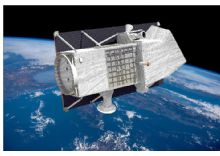PRISMA (Hyperspectral Precursor of the Application Mission), mission fully funded by Italian Space Agency (ASI), is an Earth Observation system with innovative, electro-optical instrumentation that combine a hyperspectral sensor with a medium-resolution panchromatic camera. The advantages of this combination are that in addition to the usual capability of observation based on recognising the geometric characteristics of the scene there are hyperspectral sensors which determine the chemical-physical composition of the objects present on the scene.
This offers the scientific community and users many applications in the field of environmental monitoring, resource management, crop classification, pollution control and other things. In addition, there may be other applications in the field of National Security. The main fields of expected benefits of hyperspectral data are the following:
- Forest analysis (e.g., forest disturbance, forest fires, forest classification, biomass analysis)
- Precision agriculture (e.g., crop mapping, crop rotation, crop stress analysis, fertilization)
- Inland and coastal waters (e.g., Water quality, chlorophyll monitoring, alga bloom)
- Climate change and environmental research (e.g., desertification, deforestation, vegetation stress, environmental degradation and hazards)
- Raw material exploration and mining
- Soil degradation and soil properties.
For more information:http://prisma-i.it/index.php/en/
PRISMA TECHNICAL SPECIFICATIONS:
|
Parameter |
VNIR channel |
SWIR channel |
Pan channel |
|
Spectral range |
400-1010 nm |
920-2505 nm |
400-700 nm |
|
Spectral resolution (FWHM) |
≤ 12 nm |
≤ 12 nm |
- |
|
Spectral bands |
66 |
171 |
1 |
|
SNR (Signal-to-Noise Ratio) |
200 in the range 0.4-1.0 µm |
200 in the range 1.0-1.75 µm |
240 |
|
Swath width |
30 km (FOV = 2.45º) |
||
|
Spatial resolution |
30 m |
5 m |
|
|
IFOV |
48.34 µrad |
||
|
Data quantization |
12 bit |
||
|
Instrument size |
770 mm (L) x 590 mm (W) x 780 mm (H) |
||
|
Instrument mass |
< 90 kg |
||
|
Instrument power |
< 110 W (average), < 50 W (standby) |
||
